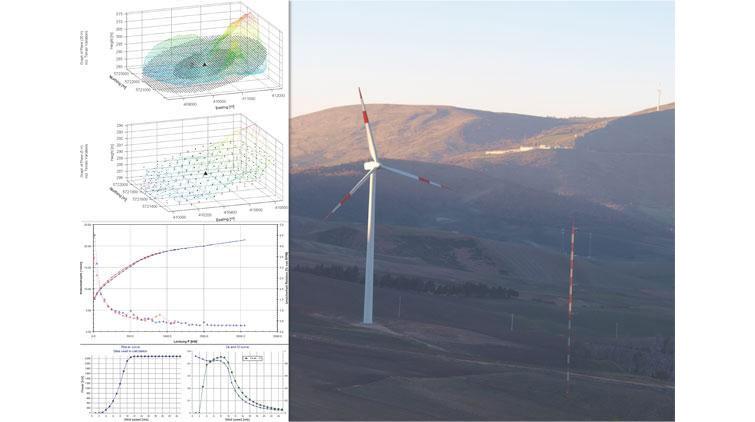Site Calibration
Accredited as Testing Laboratory following ISO / IEC 17025 for wind resource and energy yield assessment incl. site assessment and power performance measurements conform to IEC 61400-12-1, MEASNET and FGW standards
Mandatory in complex terrain
In cases of complex terrain, where power performance measurement or power curve verification shall be performed, site calibration is the enabling tool.
During power curve verification in flat terrain an undistorted, free sector is determined that lets assume that the wind speed measured at the wind mast is precisely the same free flow wind speed that hits the wind turbine at hub height, just before blockage effect of the wind turbine comes into force.
That relation of undistorted, free flow wind speed between mast and turbine cannot be maintained in complex terrain, though, as the wind speed measured at the wind measurement mast will be affected by topographical and maybe roughness characteristics of the terrain. Meaning that at the wind turbine another wind speed is present as if compared to the wind mast.
For power curve verification in such (semi) complex situations two masts are used to measure the wind and to subsequently derive the relationship between both masts. Having derived the proper statistical relationship enables removal of one mast, and putting a wind turbine exactly at that same position where the measurement mast was located before. This procedure enables to measure the power performance of a wind turbine (P-V curve) even in very complex terrain, mimicking the exact wind speed for the point of the wind turbine by site calibration following IEC 61400-12-1:2005.
Depending on the site characteristics as well as in cases where an ex-post site calibration may be impossible (e.g. as a WT is already operating and economic constraints may oppose dismantling of that WT for site calibration), we perform Power Performance Verification by aid of the nacelle anemometer as described in IEC 61400-12-2.
Preferably the Nacelle Transfer Function (NFC) of another WT and/or site can be taken into account during that process, significantly lowering measurement term and cost.
During any such procedure ... of course also the uncertainties likewise need to be considered and assessed in a bankable way.
Cost saving during normal project development with multiple measurement masts
During usual wind project planning, site calibration offers an appropriate solution to save costs by imitating measurement masts and reducing the costs for further wind measurement masts installed.
In case of huge wind farm areas or (semi-) complex terrain, often several wind measurement masts are recommended in order to assess the necessary degree of certainty requested by most banks and investors in order to offer (more) attractive financing conditions.
As a rule of thumb we recommend: each multiple of about 40 MW capacity to be installed (with some degree of variation depending on the site complexity, turbulence etc.) demands an additional measurement mast, in order to assess the wind resource and uncertainties at an acceptable level of accuracy.
Do not stress the budget! Alternating mast techniques can be applied. With a given amount of masts at a fixed position, other masts can change their location with a frequency of about 4-6 months. Advanced correlation techniques between the fixed mast(s) and the alternating masts allow mimicking and imitating the wind resource at each of the alternating masts‘ positions and heights, prolonging with acceptable uncertainty the measurement to the same period as measured at the fixed mast. Each alternating mast could therefore replace up to 3 fixed masts during one-year time.
In general the procedure reduces the uncertainties linked to the wind database investigated for the objected area by increasing the measurement period for each single measurement point in combination with multiple measurement points.


 English
English العربية
العربية











